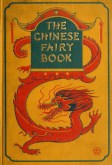Laotsze
Chinese Folktale
Laotsze is really older than heaven and earth put together. He is the Yellow Lord or Ancient, who created this world together with the other four. At various times he has appeared on earth, under various names. His most celebrated incarnation, however, is that of Laotsze, “The Old Child,” which name he was given because he made his appearance on earth with white hair.
He acquired all sorts of magic powers by means of which he extended his life-span. Once he hired a servant to do his bidding. He agreed to give him a hundred pieces of copper daily; yet he did not pay him, and finally he owed him seven million, two hundred thousand pieces of copper. Then he mounted a black steer and rode to the West. He wanted to take his servant along. But when they reached the Han-Gu pass, the servant refused to go further, and insisted on being paid. Yet Laotsze gave him nothing.
When they came to the house of the guardian of the pass, red clouds appeared in the sky. The guardian understood this sign and knew that a holy man was drawing near. So he went out to meet him and took him into his house. He questioned him with regard to hidden knowledge, but Laotsze only stuck out his tongue at him and would not say a word. Nevertheless, the guardian of the pass treated him with the greatest respect in his home. Laotsze’s servant told the servant of the guardian that his master owed him a great deal of money, and begged the latter to put in a good word for him. When the guardian’s servant heard how large a sum it was, he was tempted to win so wealthy a man for a son-in-law, and he married him to his daughter. Finally the guardian heard of the matter and came to Laotsze together with the servant. Then Laotsze said to his servant: “You rascally servant. You really should have been dead long ago. I hired you, and since I was poor and could give you no money, I gave you a life-giving talisman to eat. That is how you still happen to be alive. I said to you: ‘If you will follow me into the West, the land of Blessed Repose, I will pay you your wages in yellow gold. But you did not wish to do this.’” And with that he patted his servant’s neck. Thereupon the latter opened his mouth, and spat out the life-giving talisman. The magic signs written on it with cinnabar, quite fresh and well-preserved, might still be seen. But the servant suddenly collapsed and turned into a heap of dry bones. Then the guardian of the pass cast himself to earth and pleaded for him. He promised to pay the servant for Laotsze and begged the latter to restore him to life. So Laotsze placed the talisman among the bones and at once the servant came to life again. The guardian of the pass paid him his wages and dismissed him. Then he adored Laotsze as his master, and the latter taught him the art of eternal life, and left him his teachings, in five thousand words, which the guardian wrote down. The book which thus came into being is the Tao Teh King, “The Book of the Way and Life.” Laotsze then disappeared from the eyes of men. The guardian of the pass however, followed his teachings, and was given a place among the immortals.
Note: The Taoists like to assert that Laotsze’s journey to the West was undertaken before the birth of Buddha, who, according to many, is only a reincarnation of Laotsze. The guardian of the Han-Gu pass is mentioned by the name of Guan Yin Hi, in the Lia Dsi and the Dschuang Dsi.
The Chinese Fairy Book

Notes: The Chinese Fairy Book contains 74 Chinese folktales, sorted into several categories.
Author: Various
Editor: Dr. R. Wilhelm
Published: 1921
Publisher: Frederick A. Stokes Company, New York